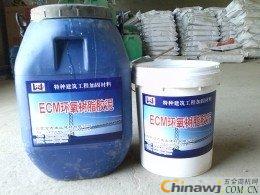To ensure the quality and long-term performance of grouting, strict control must be applied across several critical aspects. Proper execution at each stage is essential to achieve a dense, durable, and crack-free result. Here are the key points to consider: 1. **Measurement** Accurate measurement is the foundation of successful grouting. The precision level must be maintained with an error margin of ±1%. It's crucial to assign a dedicated person to handle the measuring process to avoid human errors and ensure consistency throughout the project. 2. **Mixing** The mixing process should be extended compared to standard grouting methods. This ensures a more uniform blend, especially when using expansion agents. If the mixture isn't properly blended, it could lead to poor performance or even structural issues. Typically, the mixing time is increased by 30 seconds to guarantee homogeneity. 3. **Vibration** Proper vibration is vital to eliminate air pockets and achieve a compact structure. The process must be carefully controlled—avoid over-vibration or under-vibration. When the grout no longer settles and the surface is smooth without bubbles, it indicates that the compaction has been successfully achieved. 4. **Curing** Curing plays a significant role in the final strength and durability of the grout. It’s important to maintain proper humidity conditions during this phase. For general projects, a 14-day wet curing period is recommended, while some applications may use water storage for 7 days to ensure optimal hydration and performance. 5. **Finishing** The finishing stage directly influences the likelihood of plastic cracking. After the initial setting, the surface should be troweled at least twice using a wooden float. The final pass should be done just before the final set to prevent early cracks and ensure a smooth, stable surface. **Effectiveness Analysis** Test specimens prepared under these procedures met all design requirements. Post-construction inspections showed no cracks at the wet joints, and adjacent sections were tightly bonded, confirming the effectiveness of the method. Both the construction and design teams acknowledged the success of the approach. **Key Insights** One of the most important lessons learned is that proper mixing and consistent curing are essential to maximize the benefits of the expansion agent. Unlike other admixtures, the performance of expansion agents is highly dependent on uniformity and moisture. As a supervisor, understanding these nuances is crucial to preventing local expansion issues and reducing the risk of cracking. **Current Challenges** In highway construction, there is still a lack of attention to the 14-day limit expansion ratio of the grout. Many projects rely on experience rather than following established guidelines, which can lead to improper application and potential failures. **Training and Experience** Previously, frontline technicians often lacked a deep understanding of grouting mechanics and safety protocols. Mistakes were common, and awareness was gained through trial and error. This project provided valuable hands-on experience, helping to build a stronger knowledge base for future applications of grouting materials.

lastic Sample Containers,Sterile Specimen Container,Urine Specimen Container
Taizhou TOPAID Medical Device Co,,ltd , https://www.topaidgen.com